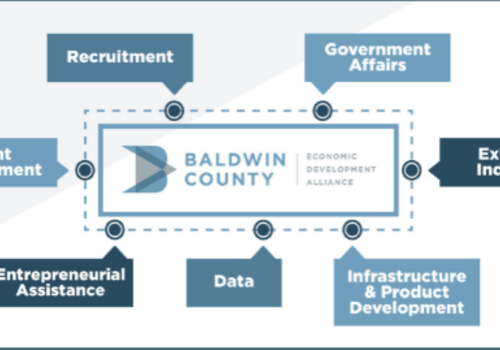Using Leadership Presence Model Could Help Prevent Employee Turnover

By: Rick Fenwick Jr., Ph.D., Columbia Southern University
In July 2019, 12% of lower-income workers—those who earn a household income of $60,000 a year or less—left their current job for a new one, resulting in the highest turnover percentage since July 2014. (Gurchiek, 2019). This data indicates that employees are increasingly more willing to leave their jobs than in years previous.
So why is there an increase in turnover amongst low-income workers?
According to a report presented at a Society for Human Resource Management conference in 2021, approximately 56% of people considered finding a new job due to the cultural atmosphere of the work environment, and specifically their managers. While there are many reasons why an individual may resign from a job, this was considered part of the so-called “Great Resignation.”
Leadership Presence Model
It is incredibly important that organizations examine their leadership practices today to stave off such an event again. One of the lessons learned: Positive interactions between management and their employees create a better work environment and helps to facilitate a culture that workers will appreciate and want to be a part of in the future.
But is creating positive interactions between management and other employees easier said than done?
This is where we introduce the Leadership Presence Model (Fenwick, 2016). The Leadership Presence Model starts with identifying the type of attention an employee requires: direction or support.
Imagine a continuum. One end is highly directive, and the other end, highly supportive. Every employee falls somewhere on the continuum, and it is the responsibility of the manager to identify where and why the worker falls on that area.
For example, new employees will most likely have many questions as they begin learning the intricacies of their new job. In the beginning, they will start on the directive side of the continuum.
Seasoned employees are more likely to understand the intricacies of the job, and the manager is better suited placing this employee on the supportive side of the continuum. Should they need help, they can call the manager for support.
When the manager identifies where the employee is on the continuum, the employees are satisfied with how they and the organization are being managed. When the manager does not properly align the employee on the continuum, the employee becomes dissatisfied and believes the manager is either micromanaging or nowhere to be found.
Note that veteran employees and newcomers can fall into other ends of the spectrum for certain tasks or responsibilities, and employees’ needs can change over time. This is another reason determining whether direction versus support is needed for each employee is vital.
Intention and Attitude
Once the manager has identified where each employee is on the continuum, the manager needs to consider the intention and attitude that they want to demonstrate when having interactions with each employee.
The intention of the manager is critical to identify first, as this sets the tone for the type of interaction that will take place. Some examples of intention might include inquiring about something job-related, checking in with an employee, being friendly and building rapport, or having a serious dialogue about job performance.
Once the manager identifies their intention, they must consider their attitude. Attitude is the quality of their attention. Direction of duties requires a more focused attention while a more passive attention can offer support or empathy to employees.
The key for managers is constantly being aware of what their employees need—direction or support—and how to best communicate it.
When a manager demonstrates behaviors and attitude that are perceived as negative, it impacts the response of the employee who could oversimplify those actions as a personal attack or identify them as the persona of the manager (i.e. They are rude or mean). When the manager does this with many employees or enough times in general, the workplace environment becomes negative and described as toxic by employees. When combined with low wages, it makes the employee consider leaving the organization, citing a manager as the reason.
By implementing the Leadership Presence Model, the manager and employee can understand their roles and communicate wants, needs and expectations that correspond often. Positive communication through the Leadership Presence Model should lead to positive interactions, better attitudes and create a more positive work environment.
Conclusion
For organizations struggling to retain employees, the Leadership Presence Model can be valuable in better understanding roles and expectations from both parties.
While employee wages are difficult to control within an organization, how managers and employees interact with each other is something that can be controlled and can be used to help gain job satisfaction and loyalty from employees.
References
Fenwick, R., & Fenwick Jr., R. (2016). Leadership Presence Model. Personal communication.
Gurchiek, K. (2019). More low-wage workers are job-hopping, Society for Human Resource Management. Retrieved from https://www.shrm.org/topics-tools/news/talent-acquisition/low-wage-workers-job-hopping.
Mirza, R. M. and B. (2023, December 21). Deconstructing the great resignation. Welcome to SHRM. https://www.shrm.org/topics-tools/news/deconstructing-great-resignation
Read More
Subscribe to our weekly newsletter
Sign up here for free to get Bay Business News email newsletter every Friday.
By subscribing, you agree to our User Agreement and Privacy Policy & Cookie Statement.











